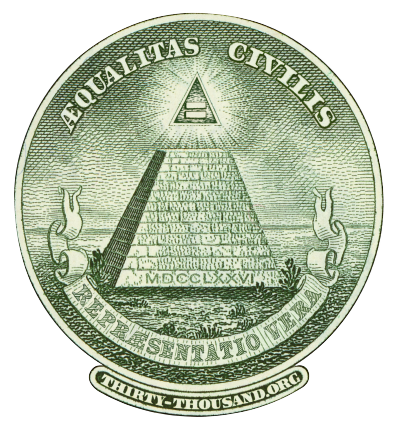Multimember Congressional Districts in the Early Republic
Each state chose whether their federal Representatives were elected from single-member districts or as part of a statewide slate.
Arguing in support of proportional representation, a recent New York Times editorial1New York Times: Gerrymander, U.S.A. (July 12, 2022) suggested that the “founders were comfortable with multimember districts”. Their supposition is based on the assertion that “such districts were common in the early years of the Republic”, which was not the first time that the Times had made this assertion.2In an editorial titled A Congress for Every American (November 10, 2018), the Times asserted that “districts that send multiple members to Congress — was the norm at the nation’s founding”. While it is true that a few states had multimember districts, those elections were quite different than what is envisioned by proponents of proportional voting. And they certainly were not “common”.
With respect to these elections, the first point to note is that they were actually statewide (similar to how Senators are elected today) as those states did not create geographically defined congressional districts. Second, and more importantly, all those elections were “general ticket” elections, in which a slate of candidates was voted upon. The main purpose of the general ticket was to “ensure the election of an entire state delegation by one dominant political party”.3Martis, K. C. (1989). The Historical Atlas of political parties in the United States Congress 1789-1989. Macmillan. Page 7. Though this method has rarely been used since the 1800s to elect federal Representatives, it is still used in every state to elect a slate of Presidential Electors (as part of the presidential election process).4National Archives: Electoral College. And like the Electoral College slate of candidates, those general-ticket elections were all-or-none (unlike the “party list” voting methods used in some proportional representation elections).
Before continuing to the next point, note the table below which lists all the states that held elections for the first 30 congresses.5The data for this table comes from Martis, K. C. (1989). The Historical Atlas of political parties in the United States Congress 1789-1989. Macmillan. The third column lists the states which held statewide general-ticket elections. The fourth column indicates the number of states with multiple single-member districts. The final column are those states which had only a single Representative.
| Congress/Year | Total Number of States | Number of States with Statewide Elections | Number of States with Multiple Single-Member Districts | Number of States with a Single Representative |
|---|---|---|---|---|
| First/1789 | 13 | 4 (CT, NH, NJ, PA) | 7 | 2 (DE, RI) |
| Second/1791 | 15 | 3 (CT, NH, NJ) | 10 | 2 (DE, RI) |
| Third/1793 | 15 | 6 (CT, GA, NH, NJ, PA, RI) | 8 | 1 (DE) |
| Fourth/1795 | 16 | 5 (CT, GA, NH, NJ, RI) | 9 | 2 (DE, TN) |
| Fifth/1797 | 16 | 5 (CT, GA, NH, NJ, RI) | 9 | 2 (DE, TN) |
| Sixth/1799 | 16 | 4 (CT, GA, NH, RI) | 10 | 2 (DE, TN) |
| Seventh/1801 | 17 | 5 (CT, GA, NH, NJ, RI) | 8 | 3 (DE, TN, OH-vacant) |
| Eighth/1803 | 17 | 6 (CT, GA, NH, NJ, RI, TN) | 9 | 2 (DE, OH) |
| Ninth/1805 | 17 | 5 (CT, GA, NH, NJ, RI) | 10 | 2 (DE, OH) |
| Tenth/1807 | 17 | 5 (CT, GA, NH, NJ, RI) | 10 | 2 (DE, OH) |
| 11th/1809 | 17 | 5 (CT, GA, NH, NJ, RI) | 10 | 2 (DE, OH) |
| 12th/1811 | 18 | 5 (CT, GA, NH, NJ, RI) | 10 | 3 (DE, LA, OH) |
| 13th/1813 | 18 | 6 (CT, DE, GA, NH, RI, VT) | 11 | 1 (LA) |
| 14th/1815 | 19 | 7 (CT, DE, GA, NH, NJ, RI, VT) | 10 | 2 (IN, LA) |
| 15th/1817 | 21 | 7 (CT, DE, GA, NH, NJ, RI, VT) | 10 | 4 (IL, IN, LA, MS) |
| 16th/1819 | 22 | 7 (CT, DE, GA, NH, NJ, RI, VT) | 10 | 5 (AL, IL, IN, LA, MS) |
| 17th/1821 | 24 | 6 (CT, DE, GA, NH, NJ, RI) | 13 | 5 (AL, IL, IN, LA, MO) |
| 18th/1823 | 24 | 5 (CT, GA, NH, NJ, RI) | 15 | 4 (DE, IL, MS, MO) |
| 19th/1825 | 24 | 5 (CT, GA, NH, NJ, RI) | 15 | 4 (DE, IL, MS, MO) |
| 20th/1827 | 24 | 4 (CT, NH, NJ, RI) | 16 | 4 (DE, IL, MS, MO) |
| 21st/1829 | 24 | 5 (CT, GA, NH, NJ, RI) | 15 | 4 (DE, IL, MS, MO) |
| 22nd/1831 | 24 | 5 (CT, GA, NH, NJ, RI) | 15 | 4 (DE, IL, MS, MO) |
| 23rd/1833 | 24 | 7 (CT, GA, MS, MO, NH, NJ, RI) | 13 | 1 (DE) |
| 24th/1835 | 26 | 7 (CT, GA, MS, MO, NH, NJ, RI) | 16 | 3 (AR, DE, MI) |
| 25th/1837 | 26 | 6 (GA, MS, MO, NH, NJ, RI) | 17 | 3 (AR, DE, MI) |
| 26th/1839 | 26 | 6 (GA, MS, MO, NH, NJ, RI) | 17 | 3 (AR, DE, MI) |
| 27th/1841 | 26 | 7 (AL, GA, MS, MO, NH, NJ, RI) | 16 | 3 (AR, DE, MI) |
| 28th/1843 | 26 | 4 (GA, MS, MO, NH) | 20 | 2 (AR, DE) |
| 29th/1845 | 29 | 4 (IA, MS, MO, NH) | 22 | 3 (AR, DE, FL) |
| 30th/1847 | 30 | 1 (WI) | 26 | 3 (AR, DE, FL) |
Referencing the table above, the final point is that such elections were not common: Only a few states held general-ticket elections, and they were always the smallest or most sparsely populated (such as a newly-admitted western state). That makes sense, as little practical benefit might result from partitioning tiny states (like Delaware or Rhode Island), or a vast new state, into congressional districts at a time when their populations were small (compared to today). Though Georgia is among these states, it was then very small despite its massive land claim, as its populated settlements did not extend west beyond the Oconee and Altamaha rivers (which was the eastern border of the Creek Nation). And note that all these states abandoned general-ticket elections once they became sufficiently populous (by the 30th Congress).
Pennsylvania is the only large state that held a general-ticket election, but only once.6Pennsylvania held a general-ticket election for the third Congress, evidently because they had not yet drawn the district boundaries resulting from the first census. Other than that single exception, all the more populous states – such as Virginia and New York – held single-member district elections ever since the dawn of our republic. Given all that, it is far more likely that the founders were not particularly comfortable with multimember electoral districts.
Therefore, it would be misleading to argue for widespread adoption of multimember districts in the United States on the basis of general-ticket elections that occurred only in small or thinly-populated states during our nation’s early years, other than to suggest that such states may still be suitable for this kind of electoral system. In fact, it is only small or thinly populated states that currently elect their state legislators from multimember districts,7Ballotpedia.org: State legislative chambers that use multi-member districts. and Maine and Alaska have recently begun using it for their federal elections.8FairVote.org: Where Ranked Choice Voting is Used. (July 2022)
In any case, this little history review reminds us that with respect to how the Representatives are elected, each state should be able to decide that for itself, rather than it being dictated by Congress. As long as no civil rights are being abridged, each state should continue to be its own laboratory of democracy.
© Thirty-Thousand.org [Article published 08/3/22, updated 08/06/22]
- 1New York Times: Gerrymander, U.S.A. (July 12, 2022)
- 2In an editorial titled A Congress for Every American (November 10, 2018), the Times asserted that “districts that send multiple members to Congress — was the norm at the nation’s founding”.
- 3Martis, K. C. (1989). The Historical Atlas of political parties in the United States Congress 1789-1989. Macmillan. Page 7.
- 4National Archives: Electoral College.
- 5The data for this table comes from Martis, K. C. (1989). The Historical Atlas of political parties in the United States Congress 1789-1989. Macmillan.
- 6Pennsylvania held a general-ticket election for the third Congress, evidently because they had not yet drawn the district boundaries resulting from the first census.
- 7Ballotpedia.org: State legislative chambers that use multi-member districts.
- 8FairVote.org: Where Ranked Choice Voting is Used. (July 2022)





